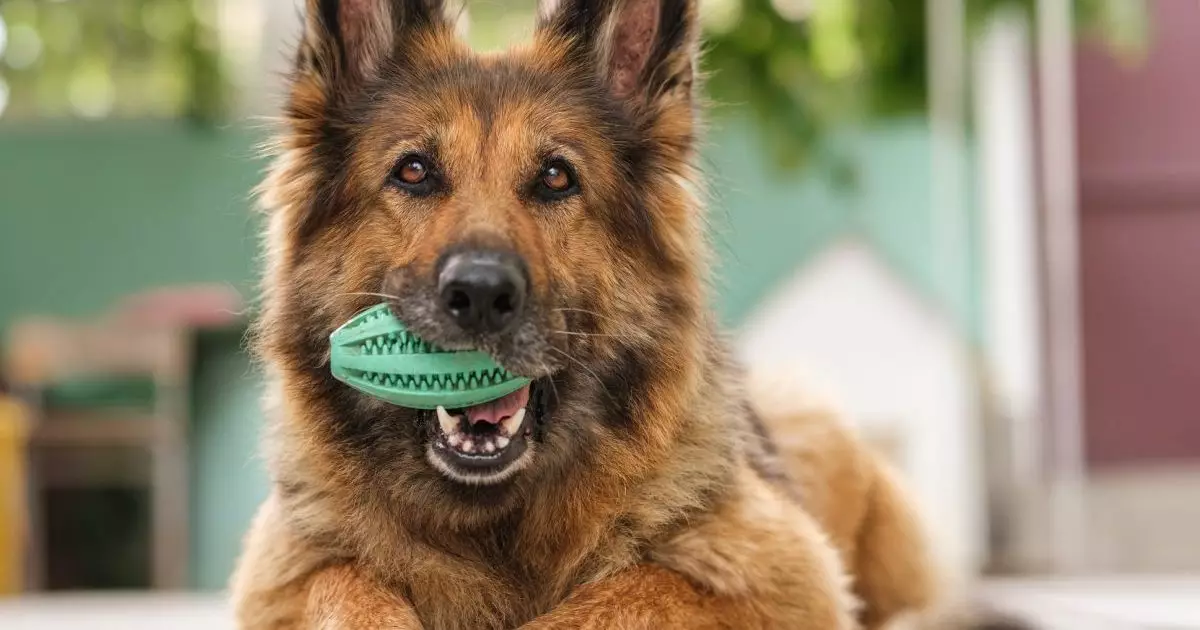Dogs are more than just pets; they are beloved companions, and knowing how to keep them happy and engaged is crucial for any dog owner. While pet stores are filled with an overwhelming variety of toys—from squeaky balls to soft plushies—picking the right toy for your dog can seem like a daunting task. However, recent research from the University of Bristol’s Veterinary School offers enlightening insights into the science of dog toy preferences, shedding light on what truly captures the interest of our canine companions.
At the heart of this exploration lies an intriguing connection to the wolf, the domestic dog’s closest ancestor. The researchers posited that dogs assess toys in a manner similar to how wolves perceive prey. This similarity likely explains why dogs gravitate toward toys that are either soft and chewable or emulate the sensory experience of food. Dr. John Bradshaw, one of the co-authors of the study, emphasizes that while these preferences are anchored in instinct, they also pose potential health risks if a dog ingests sections of toys that can break off during playtime.
Through controlled experiments, researchers observed the behavioral patterns of Labrador Retrievers—an ideal choice due to their playful nature and popularity among dog breeds. By introducing a series of toys for 30-second intervals, the researchers gauged interest levels based on the time each dog spent engaging with the toy. The setup was designed to ensure each toy offered contrasting sensory experiences, which kept the dogs’ attention and allowed researchers to study variations in interest over time.
The findings of the study indicate that novelty plays a significant role in a dog’s engagement with toys. As dogs become accustomed to the various sensory attributes of a toy—its smell, texture, and sound—they typically exhibit a diminishing interest. This decline highlights a fundamental characteristic of dogs: they are naturally drawn to explore new items. It reflects an evolutionary instinct that promotes curiosity and investigation, ensuring survival in their ancestral environments.
According to co-author Anne Pullen, the ideal toy should possess certain features—namely, being soft, easy to manipulate, and able to produce sound. Toys that lack these qualities, particularly those that are hard and lack noise-making elements, quickly lose their appeal. This understanding reaffirms the notion that the texture and auditory feedback of a toy can significantly influence a dog’s play behavior.
The Importance of Human Interaction
One crucial aspect of the study noted that dogs are inherently social animals, thriving on interaction with their human companions. The researchers concluded that toys are most engaging when they are part of an interactive game between the dog and its owner. Without this social element, a toy’s ability to sustain interest diminishes exponentially. As Dr. Bradshaw succinctly stated, dogs require encouragement and stimulation from their owners to maintain excitement with toys.
This perspective prompts dog owners to re-evaluate their role in playtime. Investing time and energy into playing with their dogs not only enriches the bond between them but also enhances the dog’s overall well-being. In contrast to many other species that show a decline in playfulness as they mature, dogs retain a lifelong zest for play, making them truly unique companions.
The findings from the University of Bristol’s research provide valuable tools for dog owners navigating the vast aisles of pet stores. Rather than simply selecting the most visually appealing toys, it’s essential to consider the texture, noise, and interaction potential of each toy. Furthermore, incorporating regular playtime with your dog not only keeps them physically active but also mentally stimulated and emotionally fulfilled. By recognizing the science behind your dog’s preferences and behaviors, you can cultivate a more engaging play experience and ultimately strengthen the bond you share.


Leave a Reply